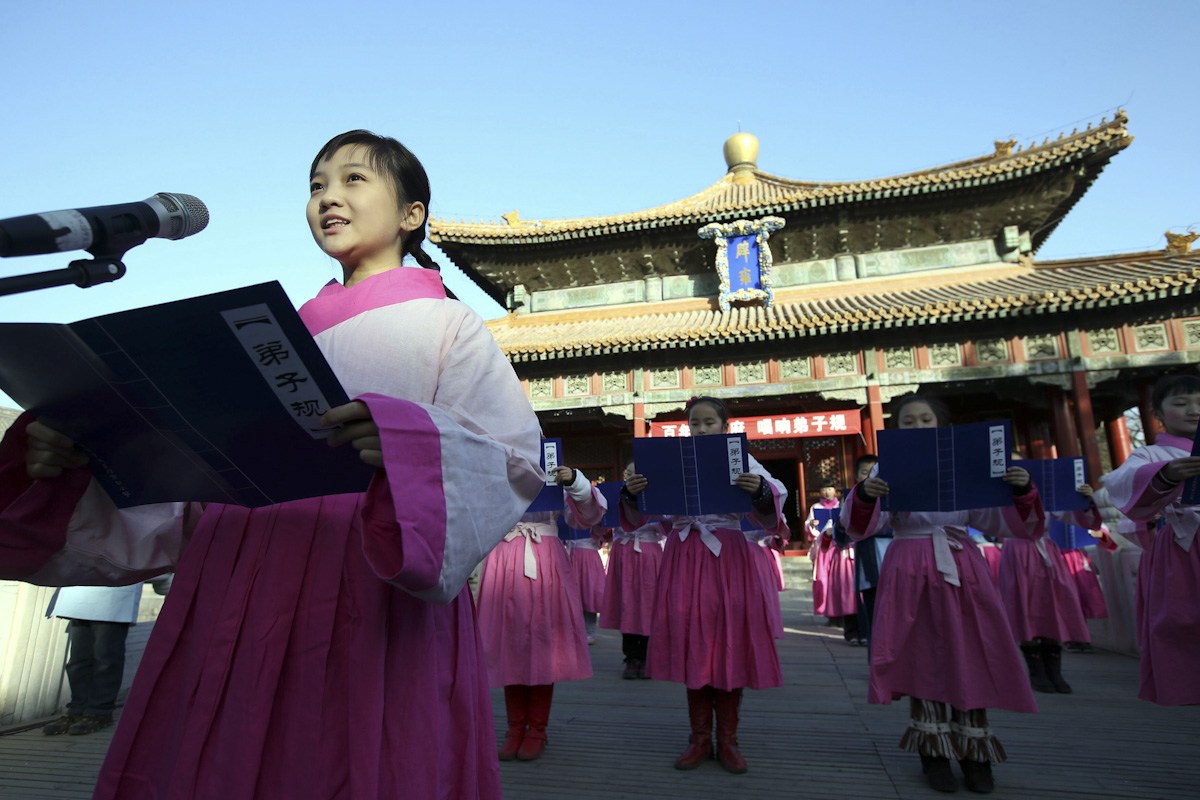Intonation essential component of literary history

Children intone Standards for Being a Good Student and Child, a treasure trove of traditional Chinese thought, norms and mores.
Intonation, yin song in Mandarin, is a way of reading poems and articles by ancient writers, involving the tunes and pitches of words. It is an art of oral performance, something between recitation and singing. In nature, intonation is done without music scores. Therefore, the act is totally improvisational. It is a means to create, appreciate and transmit old-style literature. It is also living intangible cultural heritage with multiple levels of significance.
Ancient people had two ways of reading: yin, meaning chanting, and song meaning recitation. Ancient Chinese characters were more single-toned, capable of expressing meanings independently. Generally, yin means to prolong the sound and read in a slow and soothing rhythm. Song entails the use of short syllables and to read at a high speed. The combination of yin and song allowed people to use these two ways of reading to form a unique style of alternating long and short, as well as slow and fast, which, while seemingly opposite in nature, can also supplement each other.
Modes of intonation vary with different dialects and literary forms. Dialects have different tones and pronunciations of certain words. If one uses different dialects to intone a poem, the modes naturally will be different. In terms of literary forms, when one intones a poem, both the rhythm and melody are as simple and natural as possible, following the natural flow of words. But for ci-poetry, which has definite numbers of characters in one line and often rhymes on definite syllables in one piece of poetry, intonation requires more diversification in tempos and tunes.
Intonation offers a perceptual approach to syllables and rhymes, which are valuable in literary creation. Therefore, it was the initial stage for ancient people to learn to understand and write poems. Actually, the best poems more often than not utilize long time intonation, which encompasses the repeated weighing of words and their rhymes.
Intonation also has educational relevance. Both yin and song embody the beauty of rhythms, which is an intrinsic quality of music. While music is one aspect determining one person’s personality especially moral standing, the educational function of music is to mold one’s temperament, and so it is with the art of intonation.
Intonation originated with the trend of reading the Buddhist scriptures beginning at the end of the Han Dynasty (206 BC-220 AD). But it spread because it was promoted by the Tongcheng School made up of natives of Tongcheng County, Anhui Province. The Tongcheng School was the most distinguished among the mid-Qing Dynasty schools of literature. Writers within this school stressed rhymes of syllables, advocating taking sound as the key element for probing into literature.
However, after the New Culture Movement, which arose around the time of the May Fourth Movement in 1919, the tradition of intonation was regarded as dross and then discarded. After that, in higher education, intonation was no longer included. Zhu Ziqing, an outstanding educator, poet, and essayist, felt deep regret about this, saying “it is a big loss for education.” But some venerable, elderly people who were still skilled at intonation have been actively engaged in saving, recording and spreading this art form, which means there are some signs of a revival.
Liu Yonggang is from the College of Liberal Arts at Yangzhou University.

 PRINT
PRINT CLOSE
CLOSE